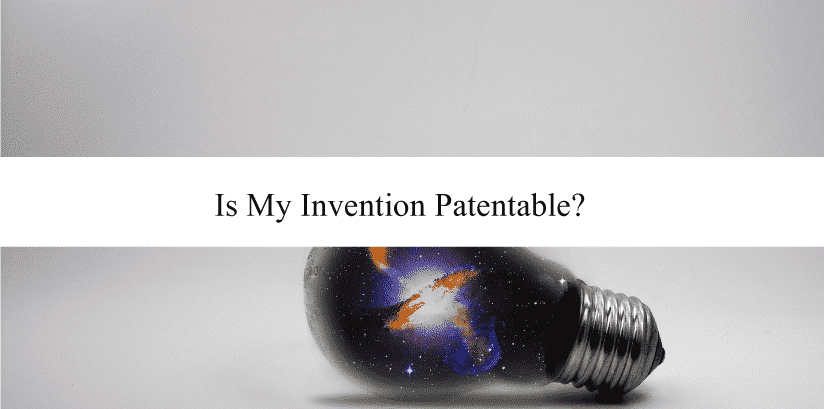Originally posted on May 15, 2023 @ 6:40 pm
Mobile app development has become a multi-billion dollar industry, with millions of apps available for download across various platforms. With such a saturated market, it is important for app developers to protect their intellectual property through patents.
In this article, we will take a closer look at the importance of mobile app patents, the types of patents available, and the 8 key components of a mobile app patent application so you can better understand mobile app patent examples.
The 3 Advantages of Mobile App Patents
Mobile app patents are crucial for several reasons. However, there are three vital reasons why a mobile app patent is important.
- They protect your invention from being copied or stolen by competitors because they give you exclusive rights to your product, which can provide you with a significant advantage in the marketplace.
- They can increase your company’s valuation, which can be beneficial if you are looking to sell or attract investors.
- Having a patent can discourage competitors from developing similar apps, which can reduce competition and increase your market share.
Clearly, there is no doubt that a mobile app patent is crucial for your business. So, let’s get into how you can protect your intellectual property with a mobile app patent.
Protecting Your Intellectual Property
To get a patent, you will need to file an application with the United States Patent and Trademark Office (USPTO). The application should outline the unique nature of your invention and how it differs from the prior mobile apps in existence.
It’s important to note that obtaining a patent can be a complex and lengthy process. You will need to conduct a thorough search of existing patents and applications to ensure that your invention is truly novel and non-obvious.
Additionally, the application itself can be quite technical and may require the assistance of a patent attorney. But trust us when we tell you that an investment in a patent attorney will be well worth it.
Once you have filed your application, it can take several months for the USPTO to review and approve it. During this time, you may need to respond to office actions or make amendments to your application in order to address any issues that arise.
Once you have your patent, it’s time to reap the benefits, and one of the biggest is gaining a competitive edge over the other businesses in the mobile app industry. Let’s get into more detail about that.
3 Ways to Gain a Competitive Edge with a Mobile App Patent
Patents can help you gain a competitive edge in several ways. Mainly, there are three ways that a patent can help you absorb more of the market share. Let’s delve into them.
- You can sue competitors who infringe on your patent, which can be a powerful deterrent against copying.
- You can license your patent to other companies, which can provide a steady stream of income. This can be particularly valuable if you are a small startup that is looking to generate revenue.
- Having a strong patent portfolio can increase your company’s credibility in the eyes of consumers, investors, and potential partners.
This demonstrates that you have a deep understanding of your industry and are committed to innovation and growth. Overall, mobile app patents are a critical tool for any company that is looking to develop and commercialize new technology.
By protecting your intellectual property and gaining a competitive edge, you can position your company for long-term success and profitability.
The 3 Types of Mobile App Patents
Mobile apps have become an integral part of our lives, and with the rise in demand for innovative and unique mobile applications, app developers are constantly looking for ways to protect their intellectual property.
There are three types of patents that can be issued for mobile apps: utility patents, design patents, and plant patents. Let’s delve into the details!
1. Utility Patents
Utility patents are the most common type of patent issued for mobile apps. They protect the functional aspects of an invention, such as its algorithm or interface.
The patent holder has the exclusive right to manufacture, use, and sell the invention for up to 20 years. Utility patents are crucial for app developers who have invested time, money, and resources into creating a unique and innovative mobile application.
With a utility patent in place, developers can prevent others from copying their app’s functionality, ensuring that they are the only ones who can benefit from their invention.
2. Design Patents
Design patents protect the ornamental design of an invention. This means that the patent holder has the exclusive right to prevent others from making, selling, or using an app that looks similar to their design for up to 15 years.
These are essential for app developers who have created a visually appealing and unique mobile application. With a design patent, developers can prevent others from creating apps that look similar to theirs, ensuring that their app stands out in the crowded mobile app market.
3. Plant Patents
Plant patents protect new and unique plant varieties that are asexually propagated. These types of patents are not common in the mobile app industry but could be applicable for apps related to gardening or agriculture.
While plant patents may not be directly related to mobile apps, they highlight the importance of patent protection for all types of inventions. Whether it’s a new plant variety or a groundbreaking mobile app, patent protection is crucial for inventors to safeguard their creations and prevent others from profiting off their hard work.
The 8 Key Components of a Mobile App Patent Application
Mobile applications have become an integral part of our daily lives! From ordering food to booking a ride, mobile apps have made our lives easier and more convenient.
With the increasing competition in the mobile app industry, it has become crucial for app developers to protect their intellectual property by obtaining patents. And there are 8 key components of a mobile app patent application you need to understand in order to apply successfully.
1. Title of the Invention
The title of the invention is the first thing that a patent examiner will see. It should be a concise and descriptive phrase that accurately reflects the app’s unique features. A good title can make the application stand out and increase the chances of it being granted.
2. Field of the Invention
The field of the invention should describe the technical area in which the app operates. This section should provide a clear understanding of the app’s purpose and the industry it belongs to. For example, if the app is related to healthcare, the field of the invention should mention that.
3. Background of the Invention
The background of the invention should provide an overview of the app’s purpose and the problems it solves. This section should explain why the app is unique and how it differs from existing solutions. It should also mention any prior art that the app is based on.
4. Summary of the Invention
The summary of the invention should provide a brief overview of the app’s major features and functions. This section should highlight the key benefits of the app and what makes it stand out from the competition. The summary should be written in a way that is easy to understand and should capture the essence of the app.
5. Brief Description of the Drawings
If applicable, this section can provide a visual aid to the invention by including drawings or illustrations that provide a better understanding of the app’s features and functions.
6. Detailed Description of the Invention
The detailed description of the invention should provide a thorough description of the app’s features, including its technical specifications, algorithms, and user interface. This section should be written in a way that is clear and concise, and should provide enough detail for a person skilled in the art to understand the invention.
It should also include any variations or modifications that can be made to the app without departing from the scope of the invention. So, include any future plans into this section.
7. Claims
The claims are the most important section of the patent application. They define the app’s unique features and what makes it patentable.
Each claim should be clear and concise, and should be written in a way that distinguishes the app from prior art. The claims should be written in a way that is broad enough to cover all possible variations of the invention, but not so broad that they are invalidated by prior art.
8. Abstract
The abstract should provide a brief summary of the patent application. It should be written in a way that is easy to understand and should capture the essence of the invention.
Mobile app patents are essential for app developers seeking to protect their intellectual property and gain a competitive edge. By understanding the types of mobile app patents available and the key components of a patent application, app developers can secure exclusive rights to their inventions and increase their company’s valuation.
In a market as saturated as mobile apps, having a strong patent portfolio can make all the difference in achieving success and now you know how to make a strong application!






